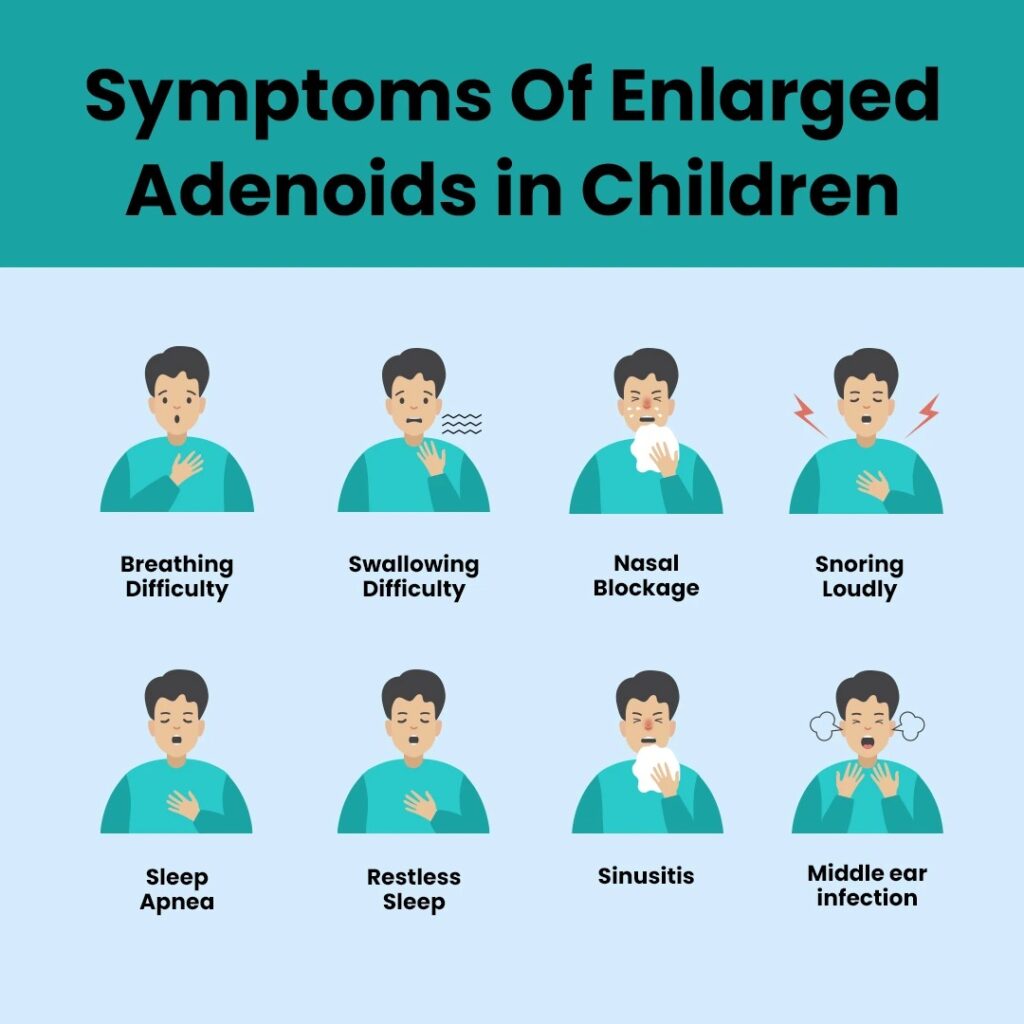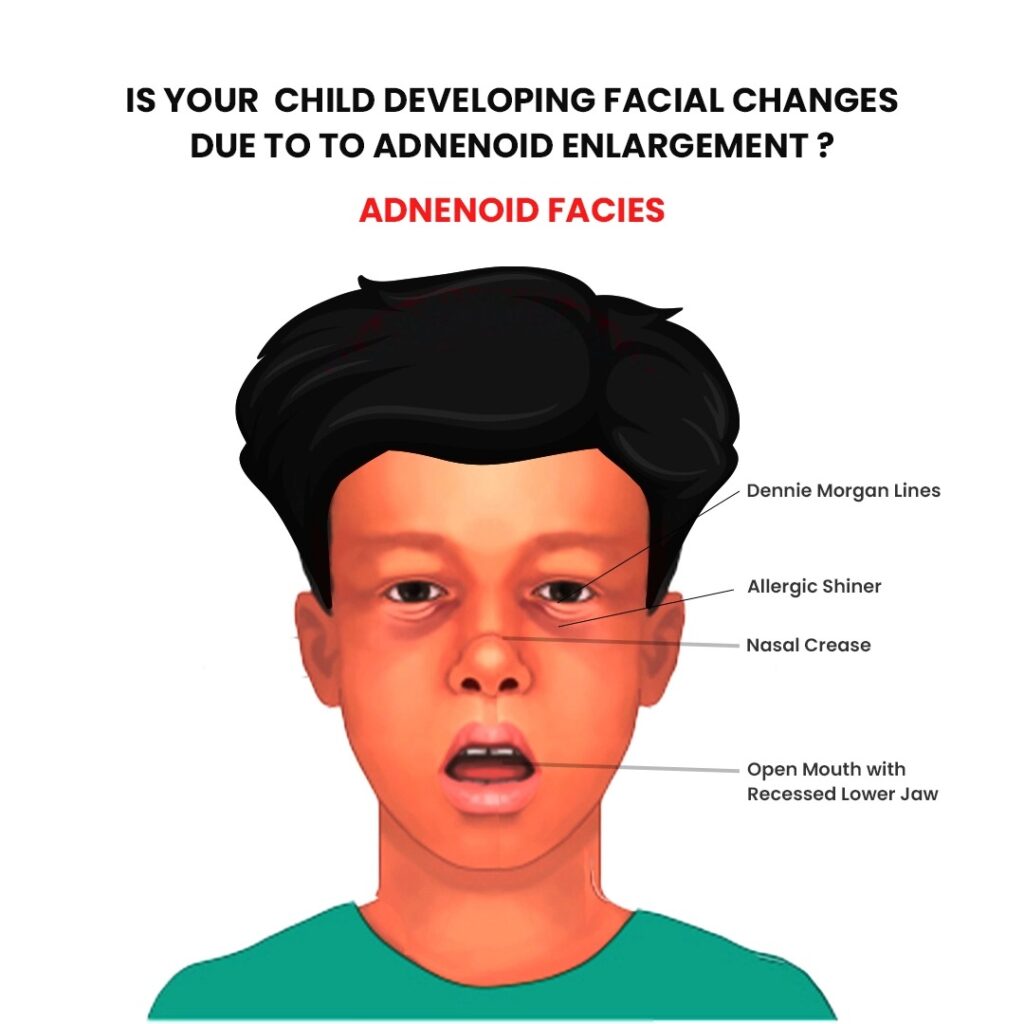Adenoid Hypertrophy
An Overview :
Adenoids are lymphoid tissues located at the back of the throat, above the soft palate, and cannot be seen through the mouth or nose. They are part of the immune system and, along with the tonsils, help to fight infections. While they are normally small, they can become enlarged due to various factors, such as infections or allergies.
Symptoms of Enlarged Adenoids :
When the adenoids become enlarged (a condition known as adenoid hypertrophy), they can obstruct the airway and lead to several symptoms, including:
- Difficulty Breathing Through the Nose: This can result in nasal congestion and mouth breathing.
- Chronic Mouth Breathing: Persistent mouth breathing due to nasal blockage can occur.
- Unclear Speech: Speech may sound more nasal or muffled, as air cannot pass easily through the nose.
- Regularly Runny Nose: Increased nasal discharge can be present.
- Frequent Ear Infections: The blockage can affect the Eustachian tube, leading to ear infections.
- Snoring: Noisy breathing during sleep is common.
- Pauses in Breathing During Sleep: This can manifest as obstructive sleep apnea (OSA), where breathing stops temporarily during sleep.

Diagnostic Investigations for Adenoid Hypertrophy:
- X-ray of the Neck: This imaging study can help visualize adenoid size and detect hypertrophy.
- Nasal Endoscopy: In some cases, a more direct examination of the nasal passages may be needed for a comprehensive assessment.
Problems Associated with Enlarged Adenoids:
Enlarged adenoids can lead to several complications, including:
- Adenoid Facies: Chronic mouth breathing due to adenoid enlargement can result in characteristic facial changes, including:
– Open-mouthed appearance
– Narrow nose
– Shortened upper lip
– High-arched palate
– Dental crowding - Glue Ear: Enlarged adenoids can obstruct the Eustachian tube, leading to fluid accumulation in the middle ear. This condition, known as serous otitis media or “glue ear,” can cause hearing impairment.
- Obstructive Sleep Apnea (OSA): OSA is a significant concern in children with enlarged adenoids. It can lead to various sleep-related issues, including snoring and episodes of breathing cessation during sleep, as well as daytime consequences like excessive sleepiness and hyperactivity.

Role of Sleep Studies in Diagnosis:
- Polysomnography: A sleep study is critical for diagnosing OSA, especially in children with snoring and symptoms indicative of adenoid hypertrophy. It monitors various physiological parameters during sleep, such as:
– Breathing patterns
– Oxygen levels
– Heart rate
– Sleep stagesThe severity of OSA determined by the sleep study results guides the management plan for the child, including potential treatment options.
